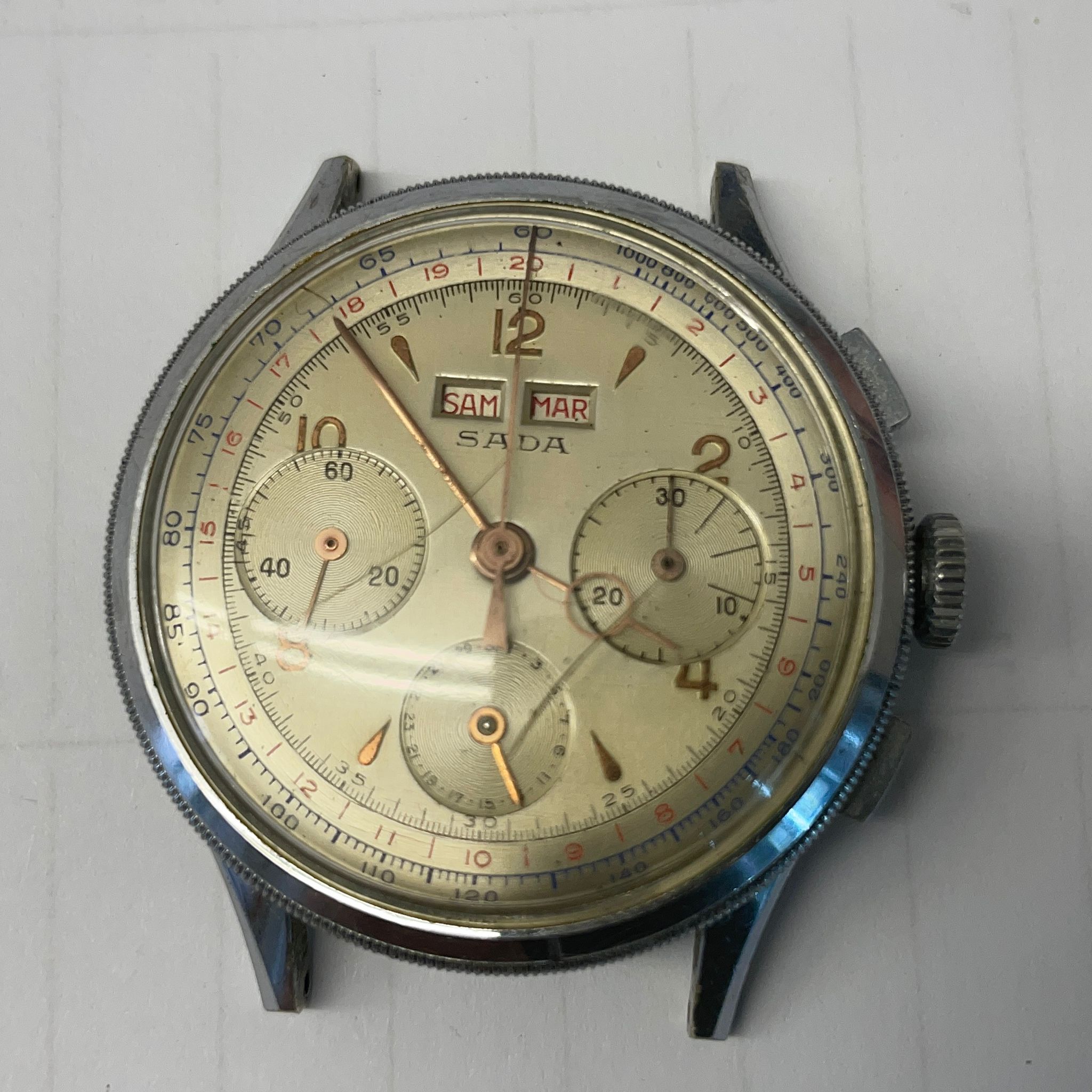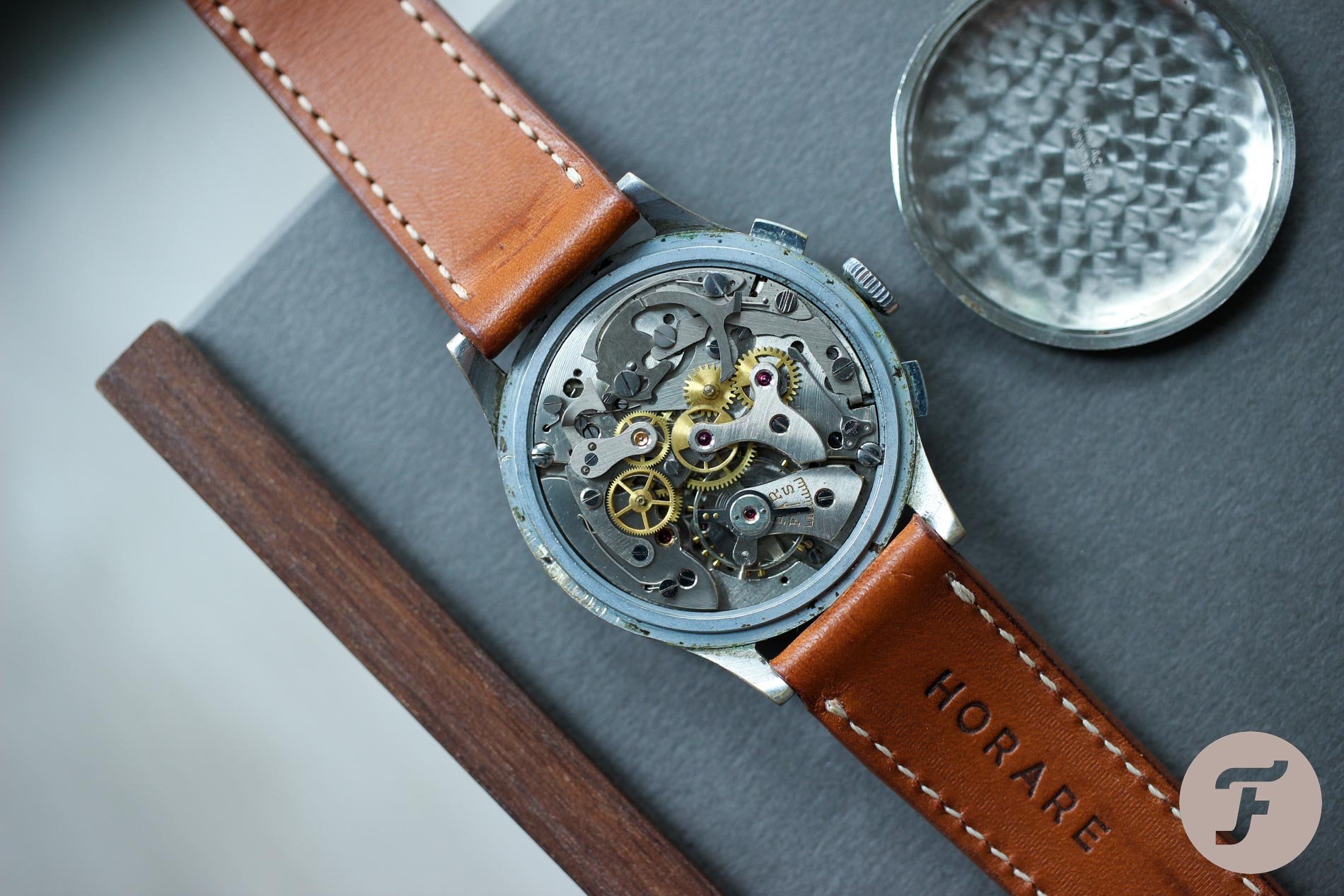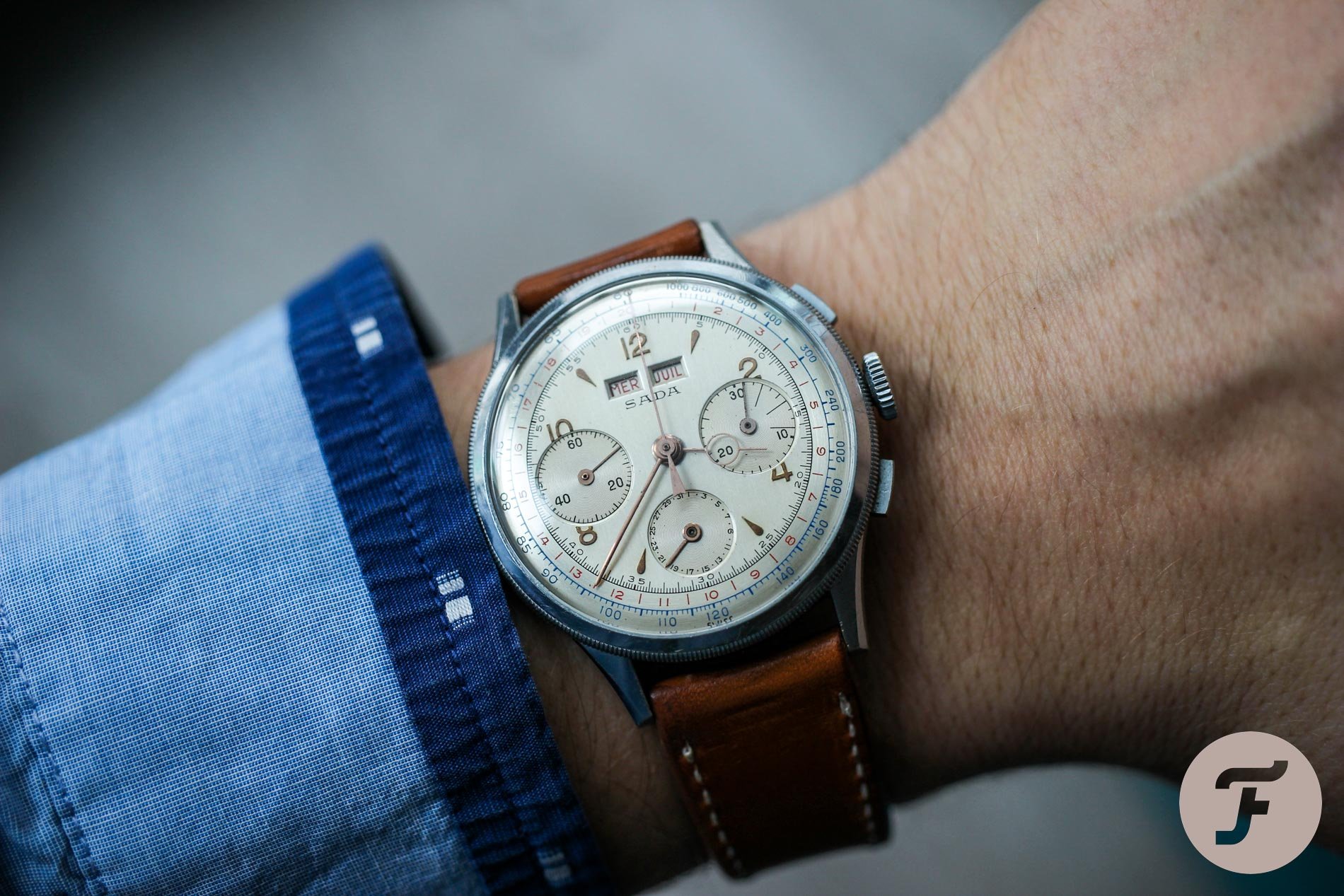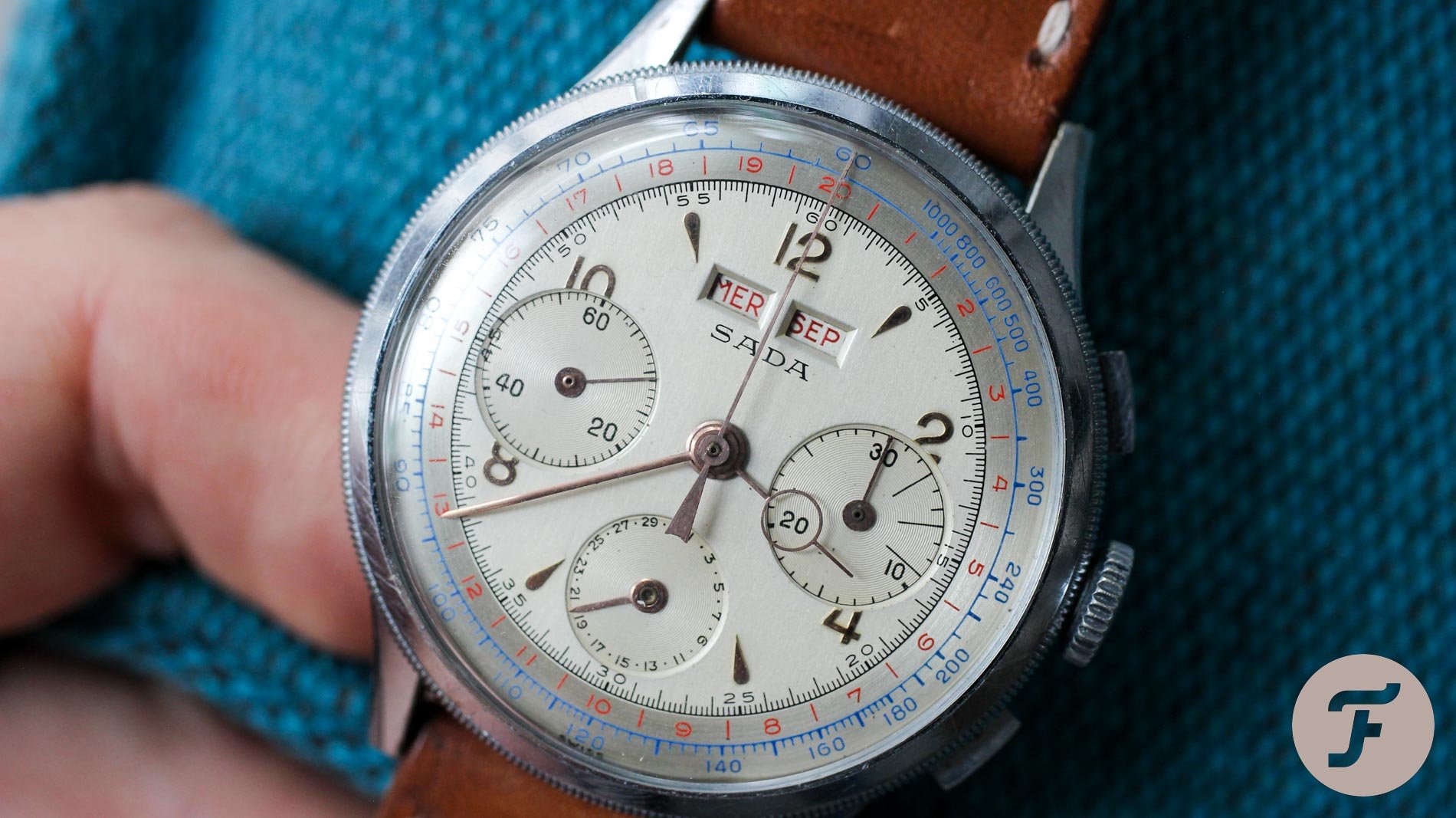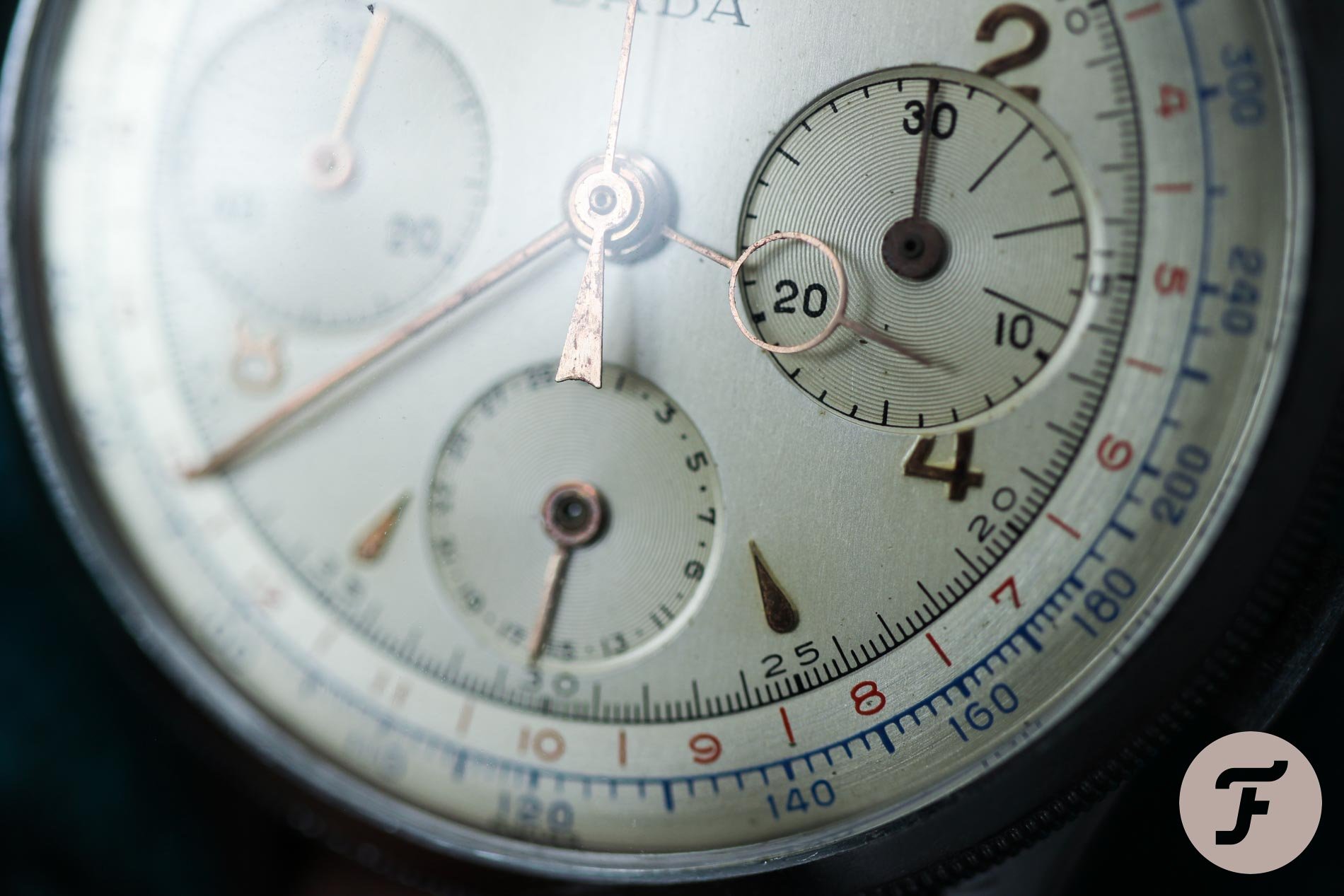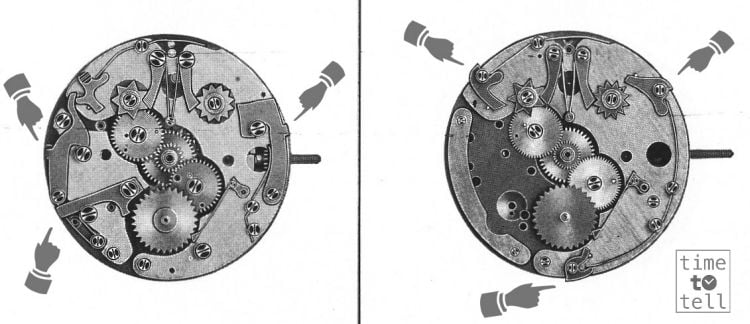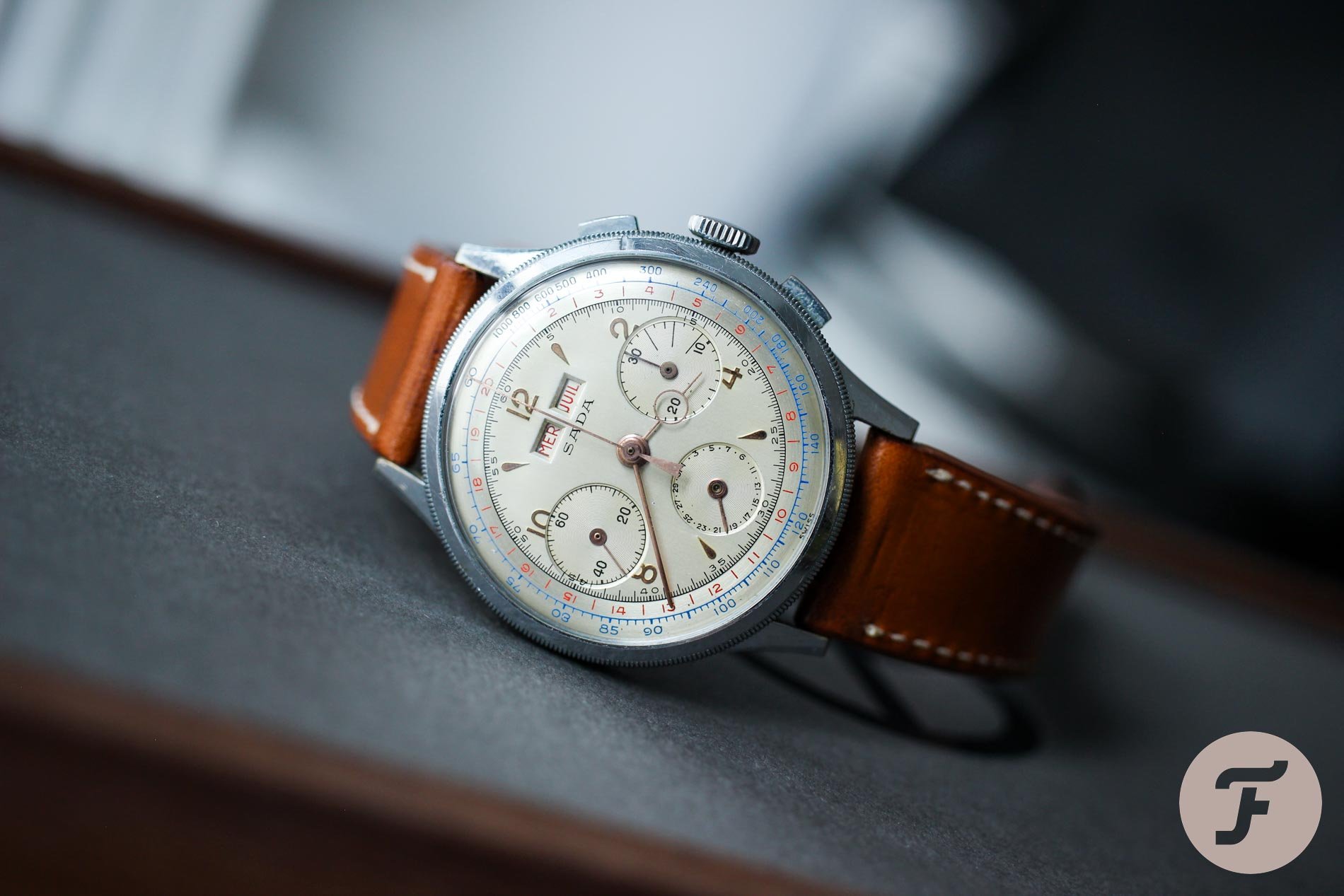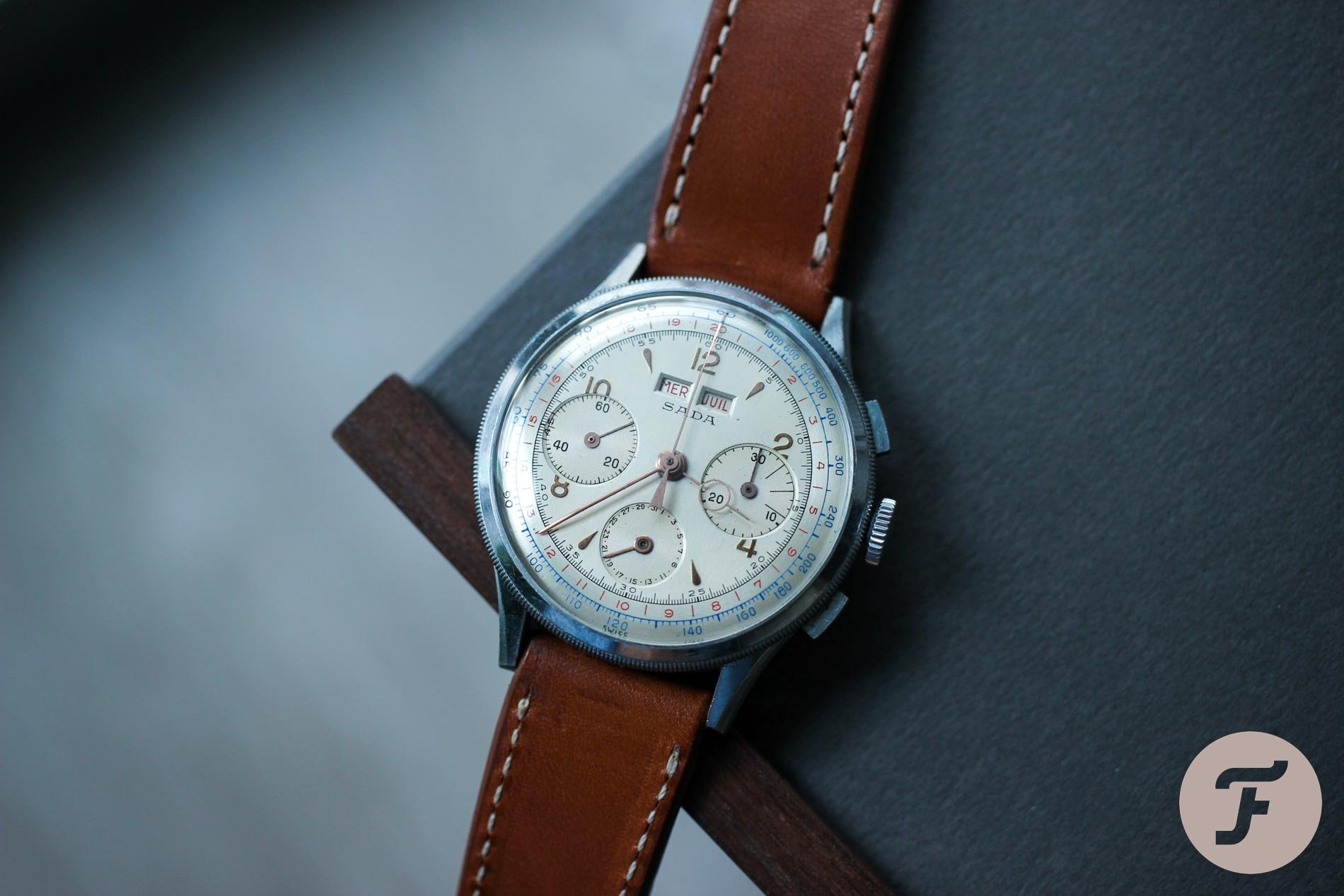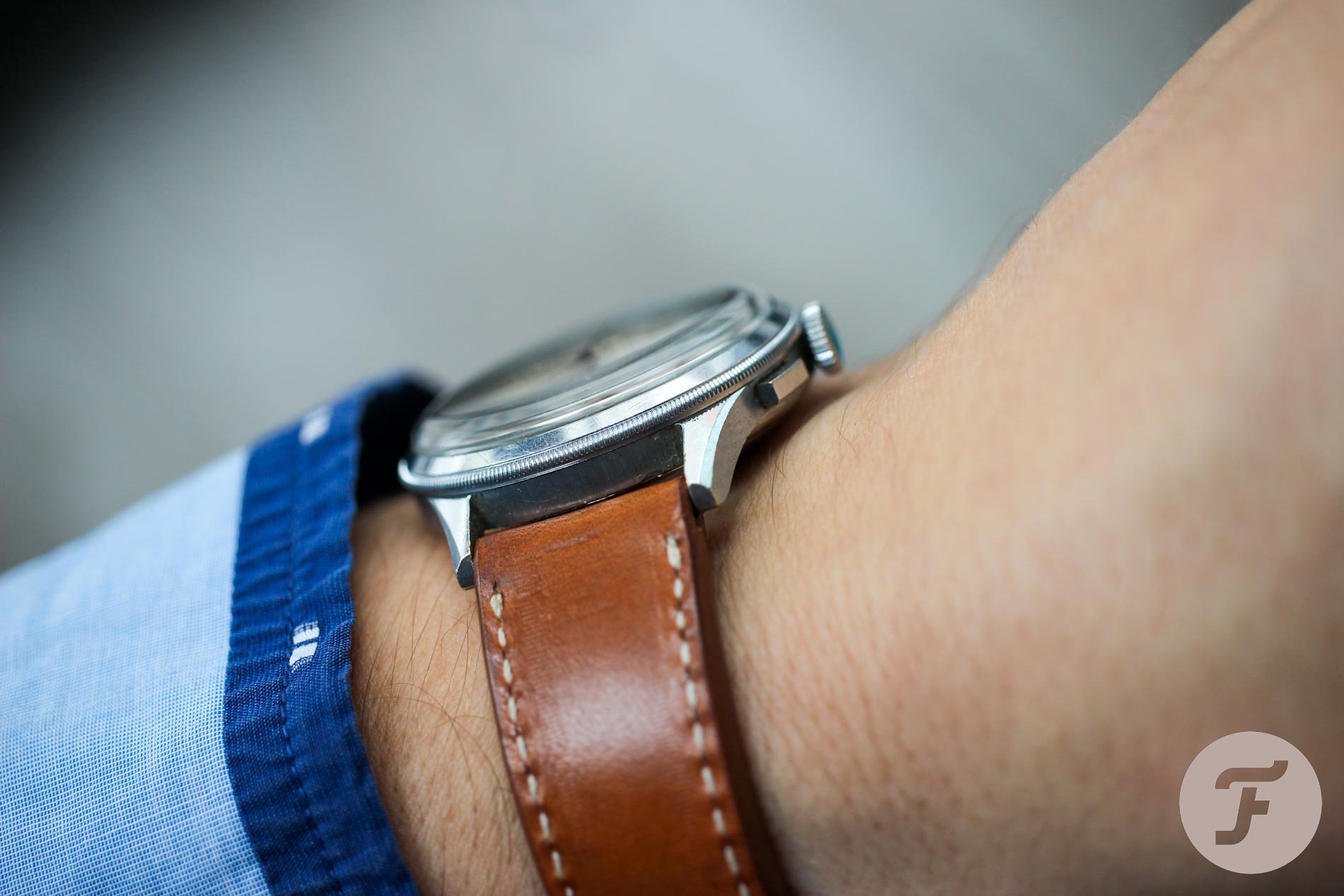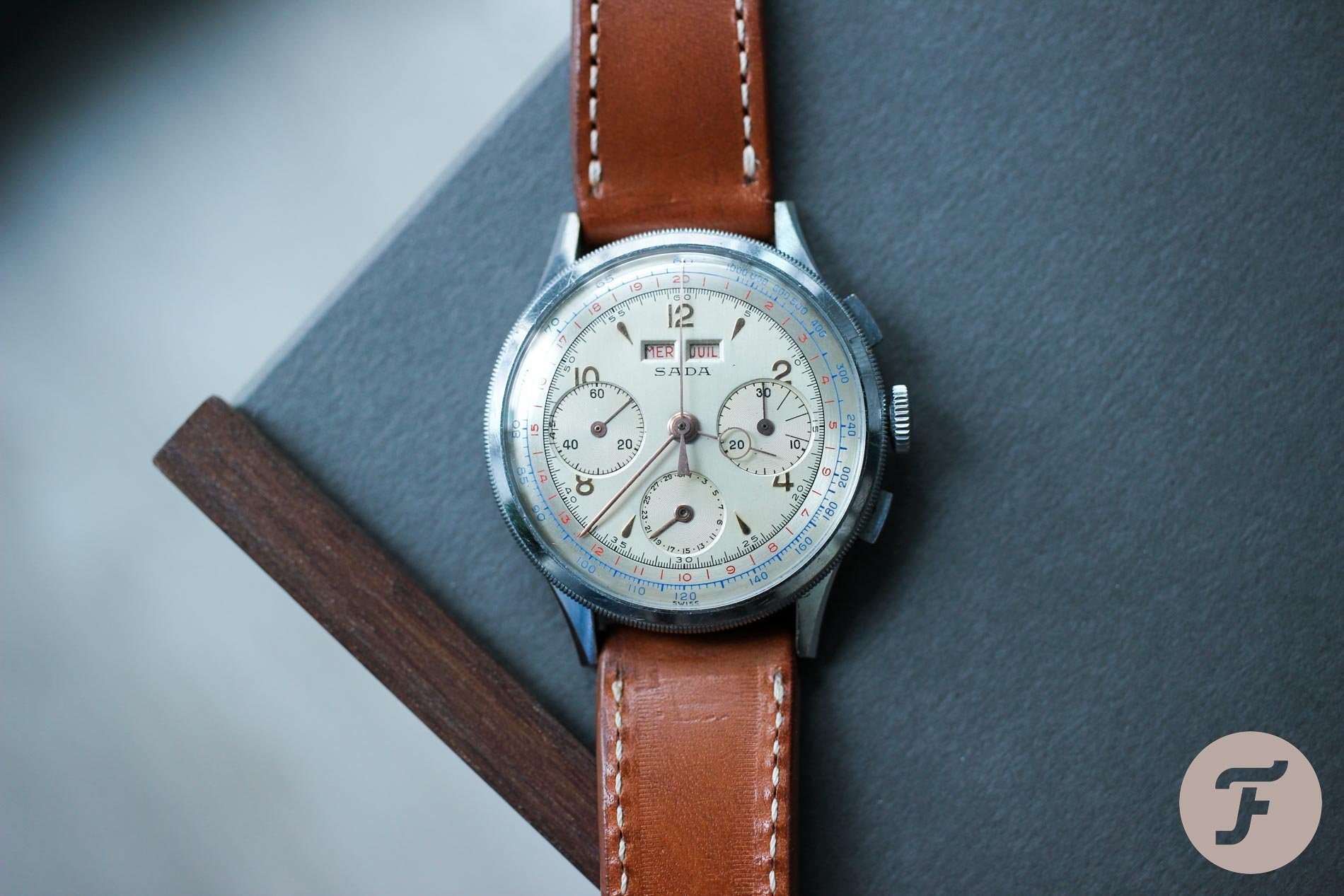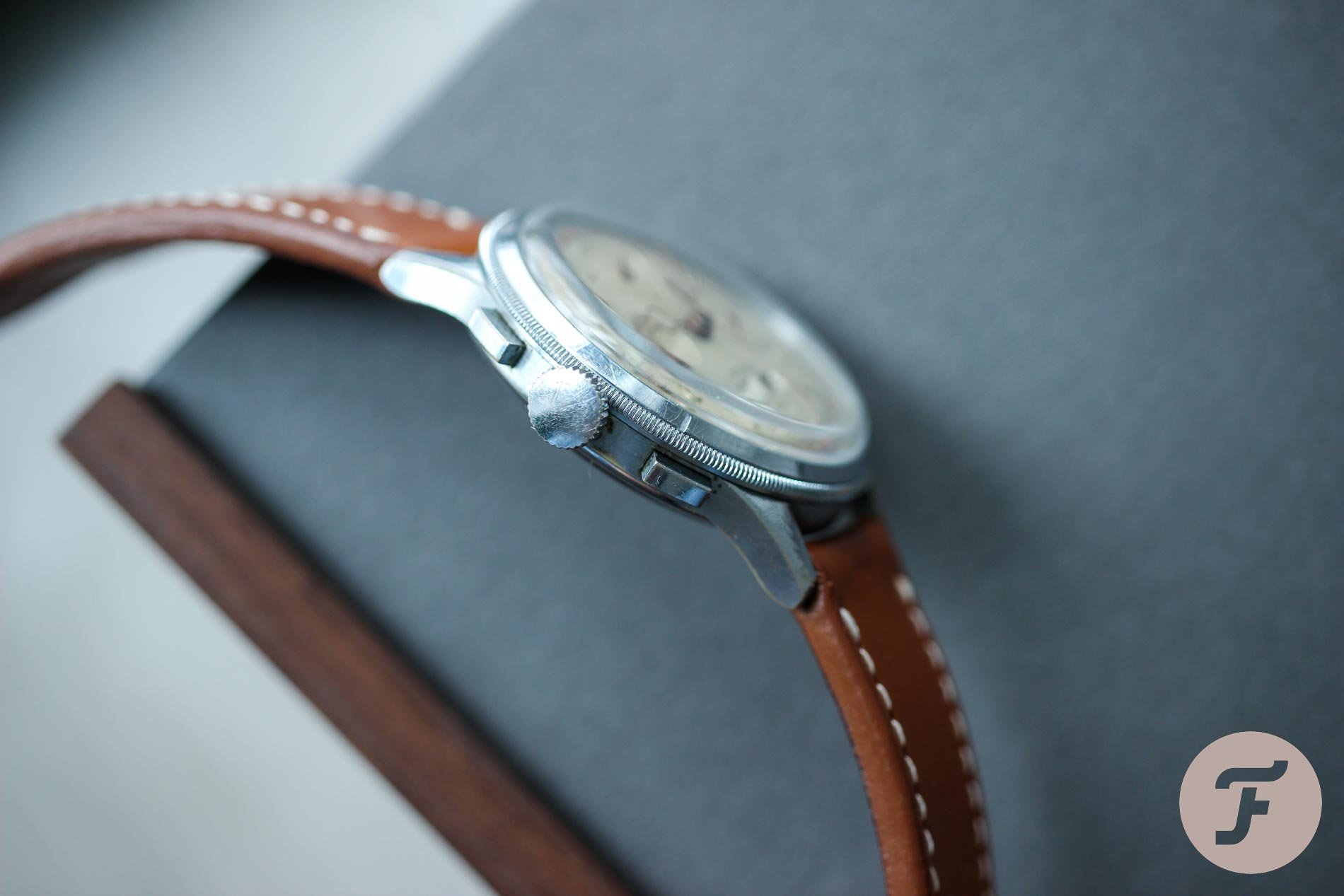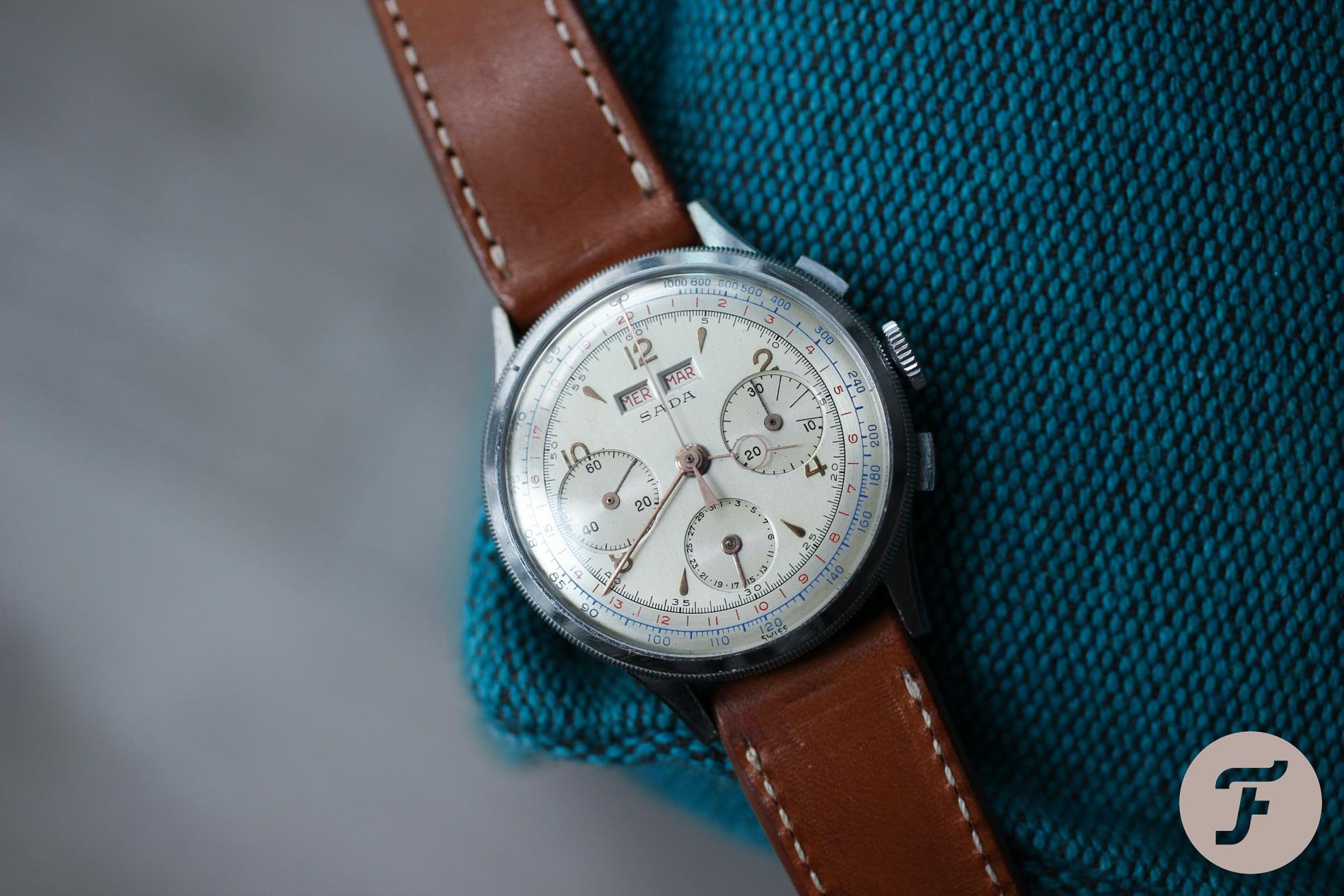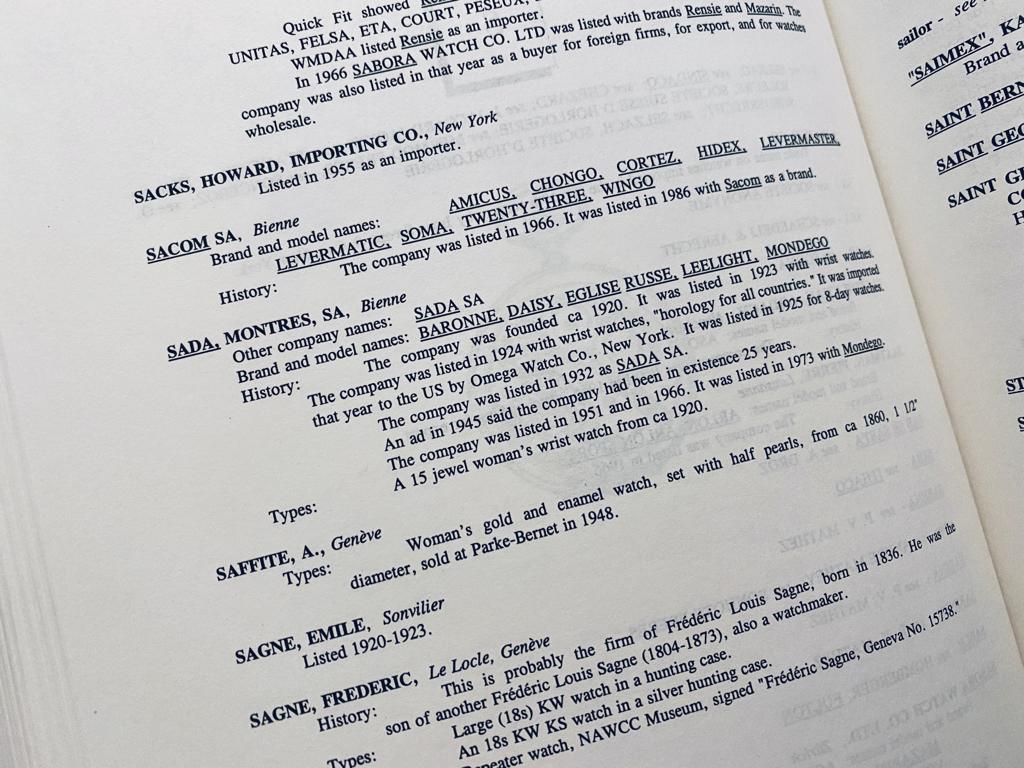#TBT Is The Landeron 58-Powered Sada The Best Vintage Date Chronograph?
About two years after Ebauches SA introduced the mightly Valjoux 72C, Landeron spiced up the game with caliber 58. It features one of the most engaging and amusing calendar-setting mechanisms for a chronograph watch.
It has been almost four years since I introduced the Landeron 185 caliber in my Kelbert chronograph. What I liked, in particular, was the “misleading” design. When you look at it from a distance, it doesn’t differ much from a typical three-register chronograph with counters for seconds, 30 minutes, and 12 hours. Only if you look closer will you see that the bottom sub-dial is slightly different. It does not display elapsed hours, but rather the date! I really like disruptive ideas, and that is a perfect example.
From Landeron 185 to Landeron 58
In my archive article on the Landeron 185, I explained that you set the date through three calendar pushers hidden around the edge of the case. I also mention that there is also another variation of the caliber that allows you to operate the date without the pins simply by using the bezel! The Landeron 185 is not easy to come by, but the bezel-operated Landeron 58 pops up even less frequently.
A message from heaven
“Hi Tomas, this may be something for your ‘rare caliber focus?'” read the message I got this summer from my friend, Breitling aficionado Fred Mandelbaum. When I saw the picture above, my heart skipped a beat. This bezel-operated Sada Landeron 58 popped up locally in Vienna without any personal story whatsoever. We were unsure if the date-setting mechanism worked, but the dial was perfect. The chrome case was good enough too, which suggests a lot. As it came from Fred’s trusted source, I decided to take a risk.
Straight to the spa
There is one great thing about a chromed case. Based on the amount of wear, you can easily tell if the watch hasn’t seen much action. The chrome will be gone only on some edges, but you must try hard to spot it. I haven’t seen a crown so stiff for quite a time, which I liked, to be honest. It seemed that this Sada had been sitting in someone’s drawer for ages. I didn’t even try it and sent it in for a spa treatment with my dear watchmaker Tomas.
The calendar-setting moment
When the Sada with the Landeron 58 came back, I had to try it out. And obviously, for the first time ever holding a chronograph, I was not checking the chronograph function first. As I didn’t know how the date worked, I was very careful. I instantly noticed a decent pointer on the bezel, so I handled it in a way that allowed me to see the marking clearly. When I started to rotate it clockwise, I noticed how it popped up a tiny bit and popped up again when I rotated it to the right position.
As it turns out, there are three calendar-setting positions around the dial. The month-setting position is at 2 o’clock, while the date-setting position is at 6 o’clock, and the weekday-setting position is at 10 o’clock. When you reach any of them, you can feel how the bezel sits in position and makes a sharp and loud clinging sound. Once it sits in the activated position, you set it with a series of short counterclockwise movements of the bezel. Check the video below to see how the calendar setting on the Landeron 58 works.
What an idea
It’s hard to describe under-the fingers-experience of setting the calendar with the bezel, but I will try. First of all, I could not imagine it all. A bezel is either supposed to be “nailed” to the case or rotated in a stable position, right? I could not wrap my head around how watchmakers made it operate in three different positions in conjunction with the calendar! To my greatest surprise, the bezel is delicate and firm at the same time. To adjust such a fine mechanism, like 31 positions for the date, it needs a bit of clearance. But when you rotate it, it is no looser than a vintage Navitimer or Chronomat.
To move it out of its current position, you need to apply just a little bit of pressure. But at the same time, the bezel sits there firmly enough not to get rotated unwillingly by your cuff when you wear the watch. When you set the date, you get the feeling that you’re operating a delicate mechanism but not a fragile one. The short bezel movements are accurate, too. They remind me of shifting gears on a classic car’s transmission. To put it simply, when I am about to set the date on my Rolex GMT-Master 1675, it gives me a headache. But give me hundreds of these Landeron 58 Sada chronographs, and I would be setting dates till the cows come home with a smile on my face!
Mysterious Sada
What, you’ve never heard of Sada before? Well, that makes two of us now. But a quick look into Pritchard’s reference book of Swiss timepieces yields surprising news. The company was founded around 1920, and it was imported to the US by Omega Watch Co., New York. If you have any information or documents that might help us to understand its possible link to Omega, please share them with us.
Pontife hands
The movement, the bezel, and the unusual branding would be enough to make me happy. The pontife hour hand, however, is the cherry on the cake. If you look around, there is a wide and wild variety of dial designs for the bezel-operated Landeron movements. They vary mostly in size and design of the date sub-register. But my Sada is the only one with a so-called “pontife” hour hand. This is a nice, pleasing detail, especially when the hour hand passes the minute counter and you see how perfectly it glides over the printed numbers.
“You have a marvelous version of it,” said Sébastien Chaulmontet, the Head of Innovation at Sellita, a passionate vintage chronograph collector, and the co-author of the Chronographs For Collectors book. On this website, you can find some more watches using bezel-operated Landeron movements. I also learned that there are differences between variations of this movement. In a short five-year span between 1948 and 1953, Landeron created five versions of bezel-operated date chronograph movements. Calibers 58 and 59 have a diameter of 13 ¾ lignes, while the Landeron 56 and 57 measure 14 lignes, which is about 0.8mm more in diameter. There was also a Landeron caliber 10, the only one from the family equipped with a column wheel.
Last thoughts on Landeron 58
You know how much I love to dig up any quirky, amusing, and surprising vintage watch complications. This Sada also reminds me of another quirky piece, the Basis alarm watch with a Baumgartner movement. With that watch, it is not even the bezel but the entire crystal that rotates to set the alarm.
I am so happy that a Landeron 58 finally found its way to me. But if it wouldn’t have been for my friend who thought of me, you wouldn’t be reading this article. So this is a great opportunity to remember that watch collecting is also a celebration of friendship, selflessness, and the guilty pleasures of minds that think alike. Happy hunting!


